Abstract
Six pigeons were trained to detect differences between two white stimuli, S1 and S2, differing in duration and arranged probabilistically on the center key of a three-key chamber. Detection performance was measured at two levels of discriminability. At one level, S1 was five seconds and S2 was thirty seconds. At the other level, S1 was twenty seconds and S2 was thirty seconds. The procedure was a standard signal-detection yes-no design in which stimulus-presentation probability was varied from .1 to .9 at both discriminability levels. On completion of the center-key stimulus, a peck on the center key darkened the center-key light and turned on the two red side keys. A left-key response was "correct" on S1 trials, and a right-key response was "correct" on S2 trials. Correct responses produced food reinforcement on a variable-ratio 1.3 schedule. Incorrect responses produced three second blackout. Discriminability was higher for the five-second versus thirty-second conditions than for the twenty-second versus thirty-second conditions, but there were no differences in sensitivity of behavior to reinforcement variation for the two stimulus pairs. Response bias was a function of the relative reinforcement rate for correct choice responses.
Full text
PDF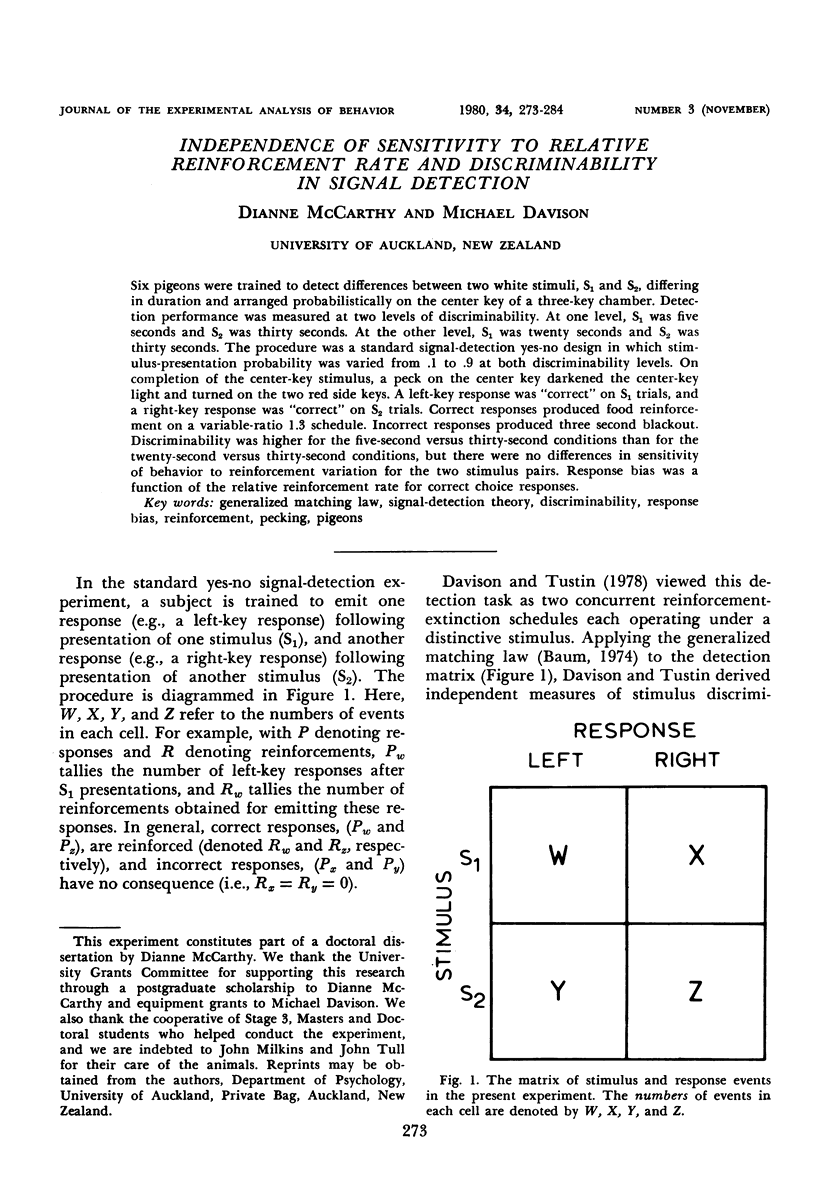
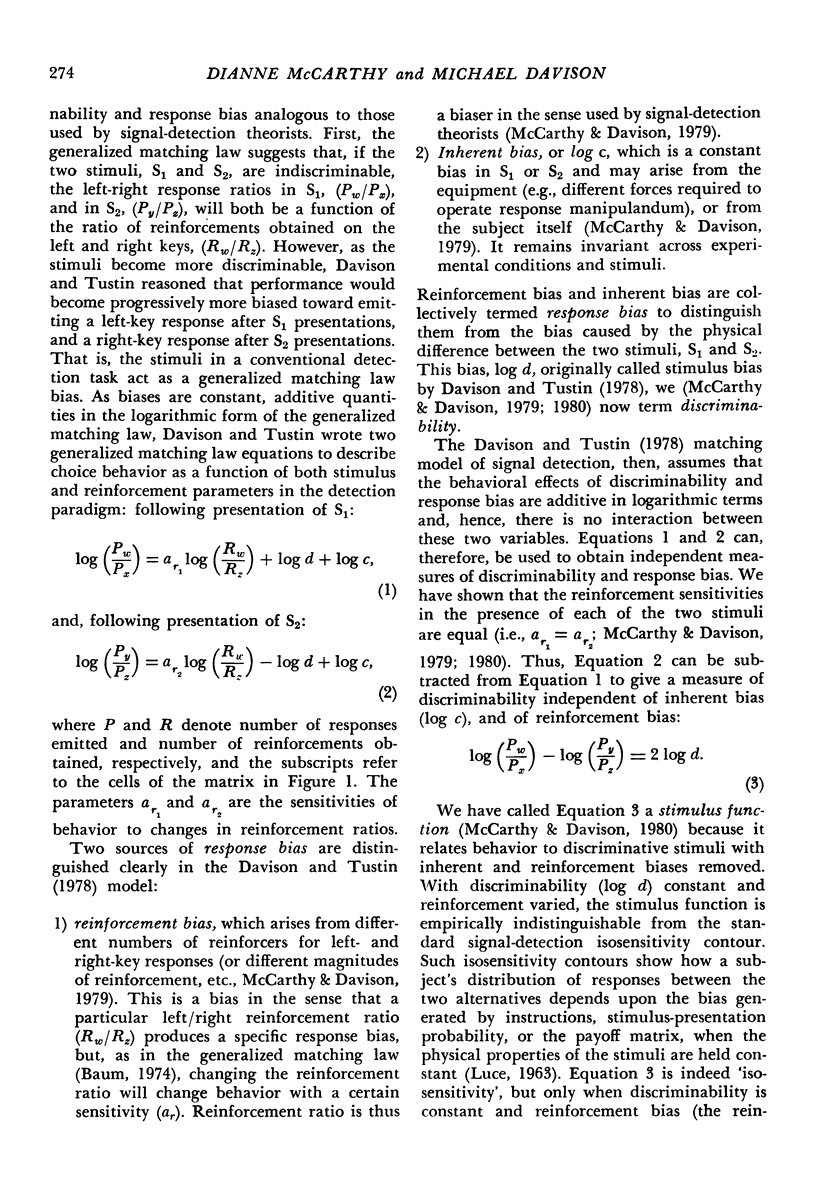

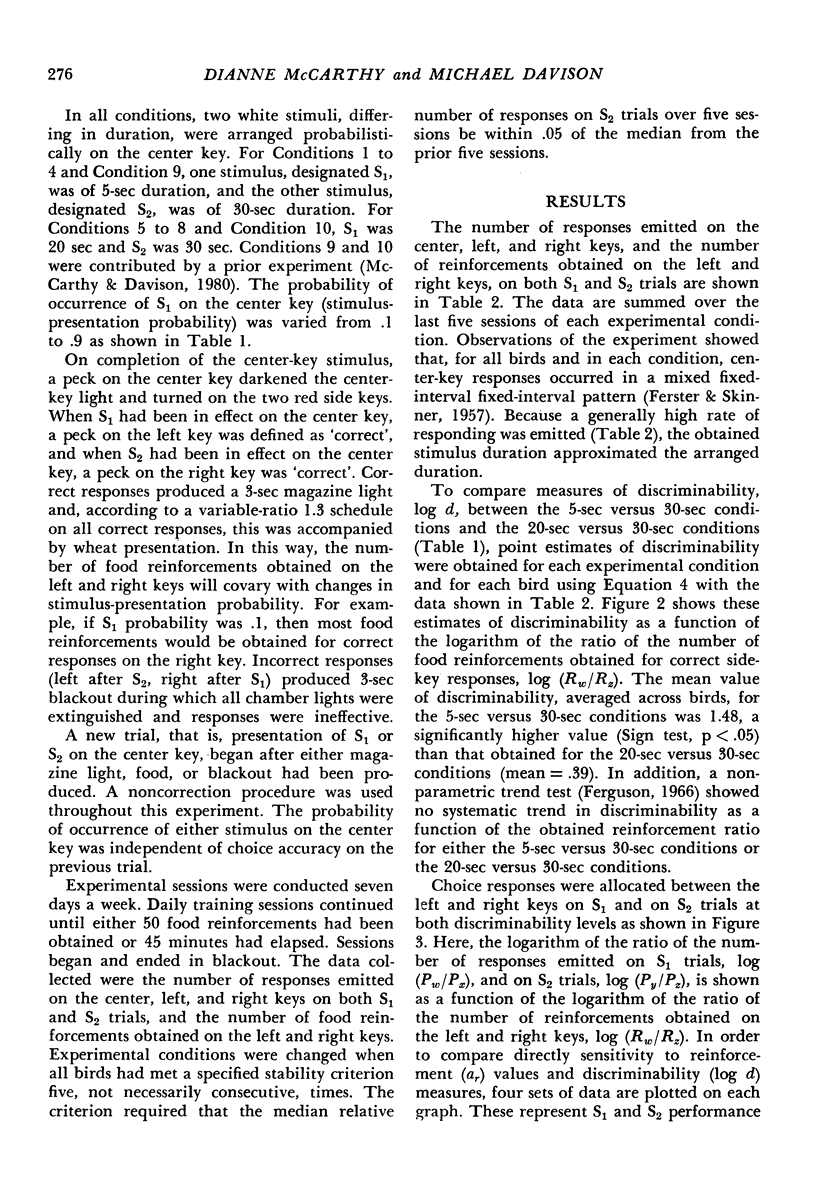
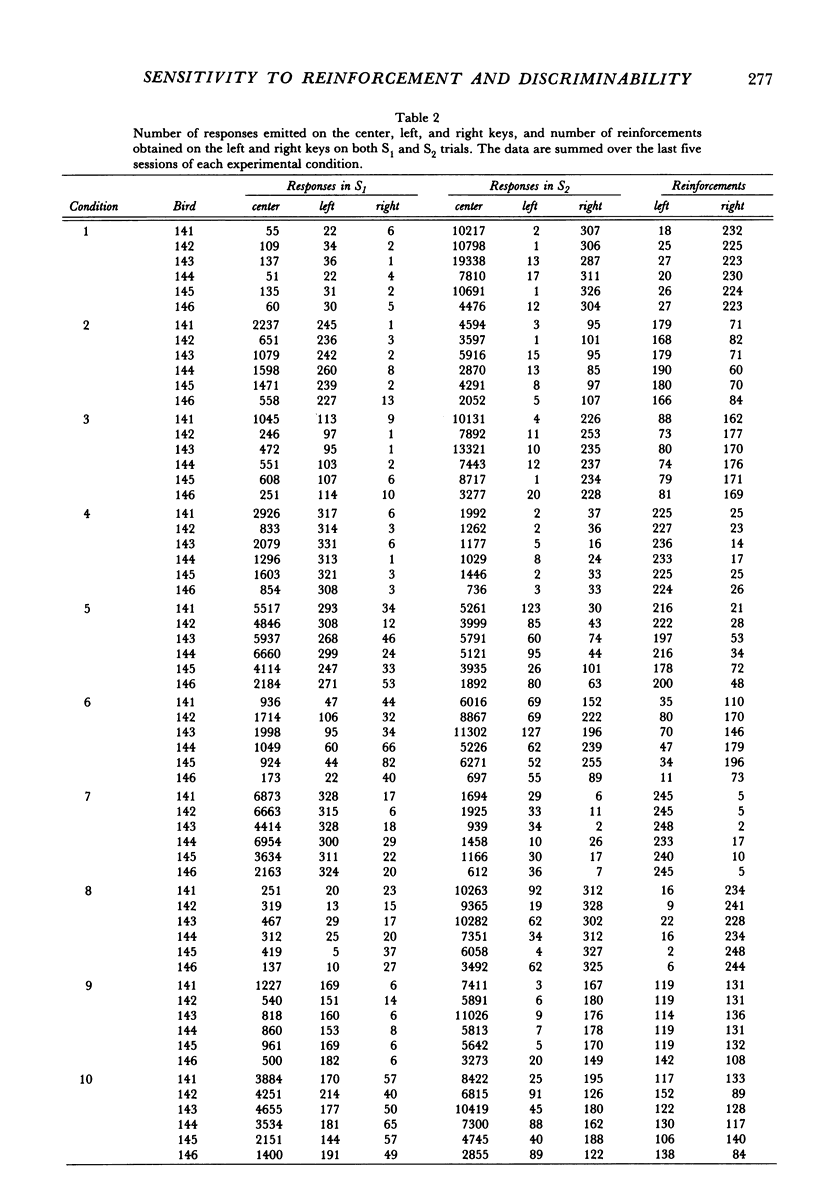
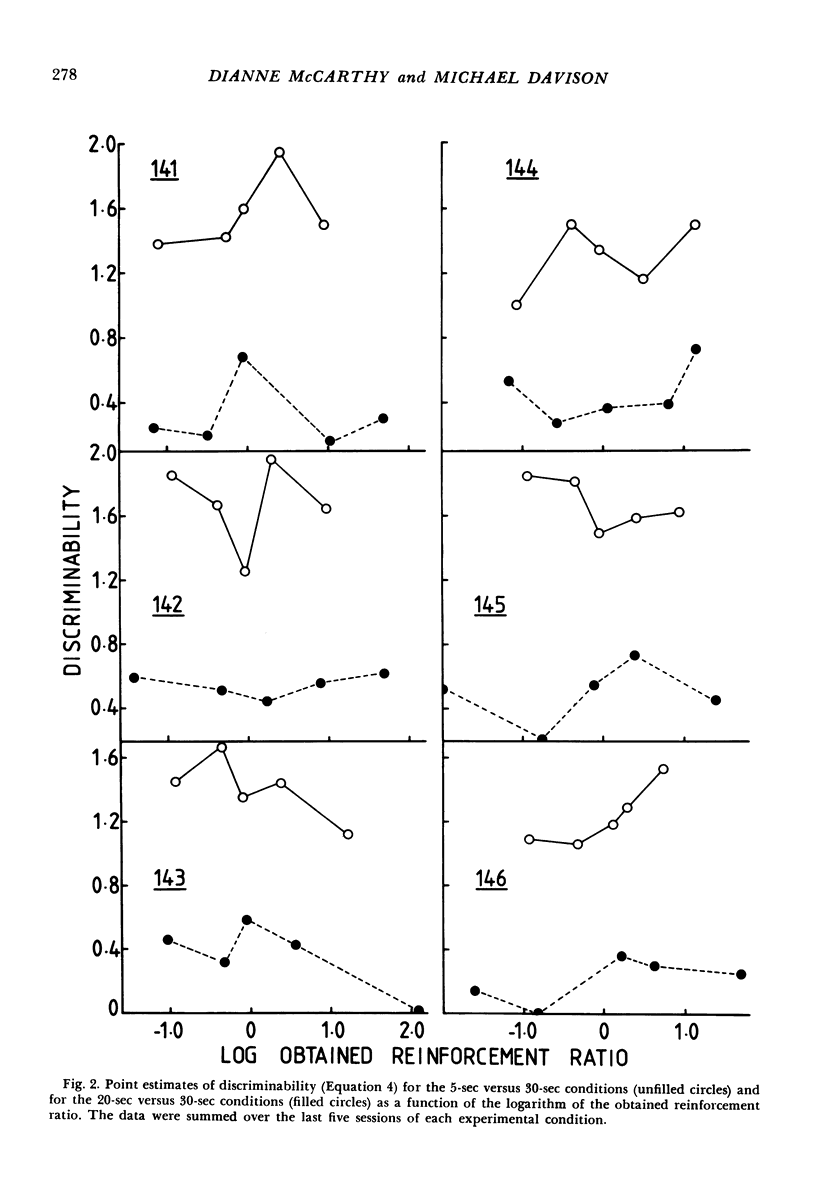
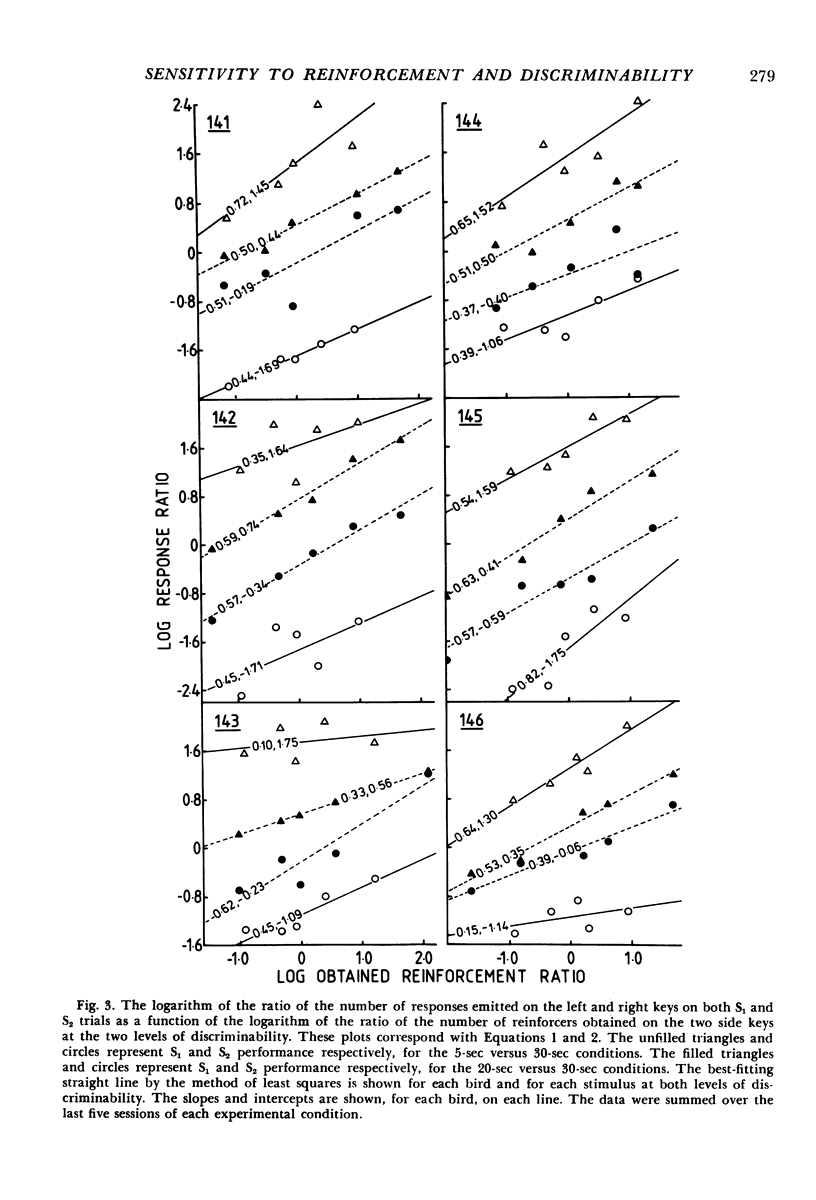


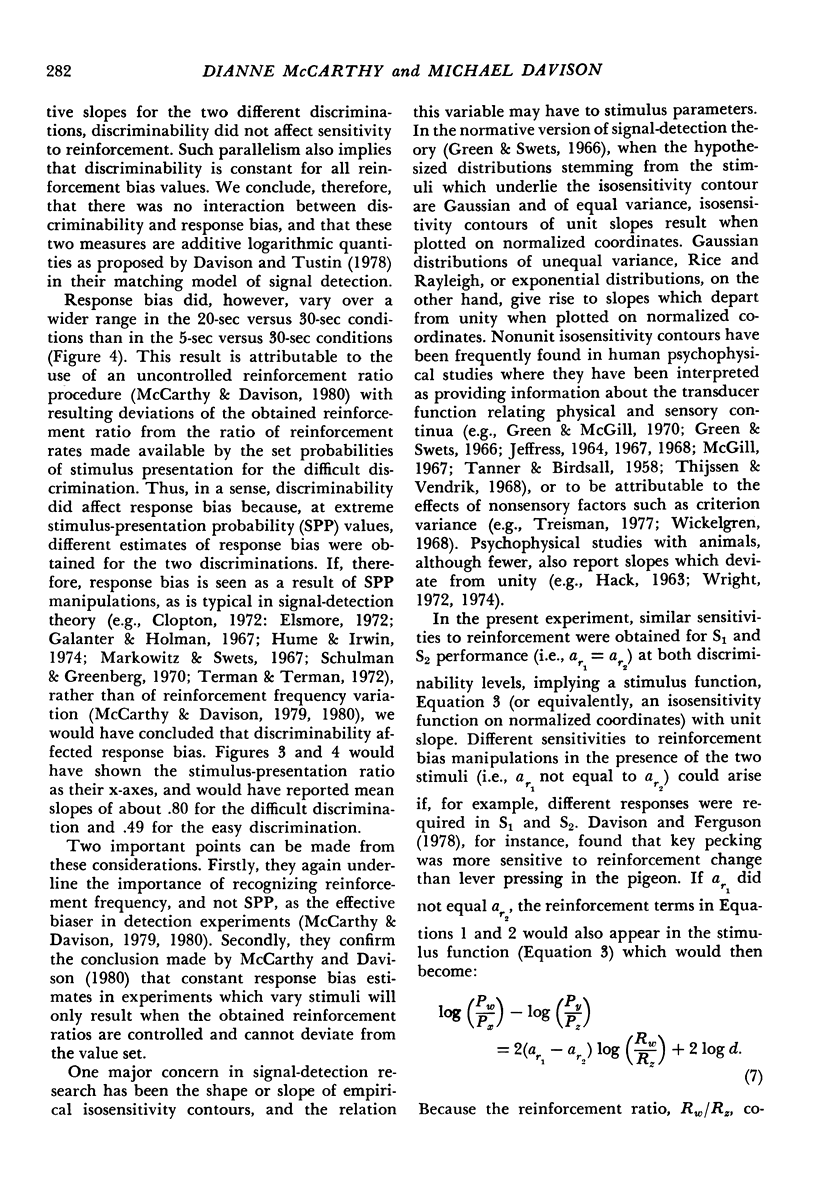
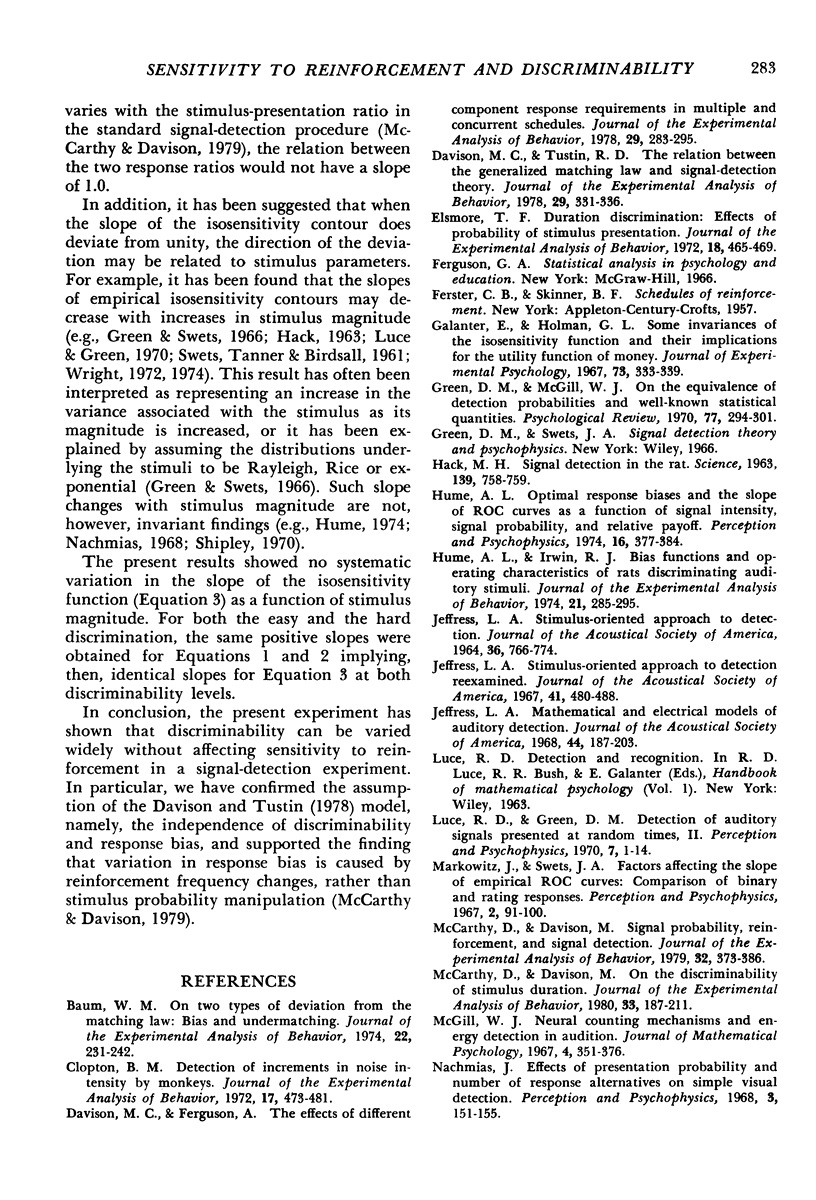

Selected References
These references are in PubMed. This may not be the complete list of references from this article.
- Baum W. M. On two types of deviation from the matching law: bias and undermatching. J Exp Anal Behav. 1974 Jul;22(1):231–242. doi: 10.1901/jeab.1974.22-231. [DOI] [PMC free article] [PubMed] [Google Scholar]
- Clopton B. M. Detection of increments in noise intensity by monkeys. J Exp Anal Behav. 1972 May;17(3):473–481. doi: 10.1901/jeab.1972.17-473. [DOI] [PMC free article] [PubMed] [Google Scholar]
- Davison M. C., Tustin R. D. The relation between the generalized matching law and signal-detection theory. J Exp Anal Behav. 1978 Mar;29(2):331–336. doi: 10.1901/jeab.1978.29-331. [DOI] [PMC free article] [PubMed] [Google Scholar]
- Davison M., Ferguson A. The effects of different component response requirements in multiple and concurrent schedules. J Exp Anal Behav. 1978 Mar;29(2):283–295. doi: 10.1901/jeab.1978.29-283. [DOI] [PMC free article] [PubMed] [Google Scholar]
- Elsmore T. F. Duration discrimination: effects of probability of stimulus presentation. J Exp Anal Behav. 1972 Nov;18(3):465–469. doi: 10.1901/jeab.1972.18-465. [DOI] [PMC free article] [PubMed] [Google Scholar]
- Galanter E., Holman G. L. Some invariances of the isosensitivity function and their implications for the utility function of money. J Exp Psychol. 1967 Mar;73(3):333–339. doi: 10.1037/h0024275. [DOI] [PubMed] [Google Scholar]
- Green D. M., McGill W. J. On the equivalence of detection probabilities and well-known statistical quantities. Psychol Rev. 1970 Jul;77(4):294–301. doi: 10.1037/h0029387. [DOI] [PubMed] [Google Scholar]
- HACK M. H. Signal detection in the rat. Science. 1963 Feb 22;139(3556):758–760. doi: 10.1126/science.139.3556.758. [DOI] [PubMed] [Google Scholar]
- Hume A. L., Irwin R. J. Bias functions and operating characteristics of rats discriminating auditory stimuli. J Exp Anal Behav. 1974 Mar;21(2):285–295. doi: 10.1901/jeab.1974.21-285. [DOI] [PMC free article] [PubMed] [Google Scholar]
- Jeffress L. A. Mathematical and electrical models of auditory detection. J Acoust Soc Am. 1968 Jul;44(1):187–203. doi: 10.1121/1.1911053. [DOI] [PubMed] [Google Scholar]
- Jeffress L. A. Stimulus-oriented approach to detection re-examined. J Acoust Soc Am. 1967 Feb;41(2):480–488. doi: 10.1121/1.1910358. [DOI] [PubMed] [Google Scholar]
- McCarthy D., Davison M. On the discriminability of stimulus duration. J Exp Anal Behav. 1980 Mar;33(2):187–211. doi: 10.1901/jeab.1980.33-187. [DOI] [PMC free article] [PubMed] [Google Scholar]
- McCarthy D., Davison M. Signal probability, reinforcement and signal detection. J Exp Anal Behav. 1979 Nov;32(3):373–386. doi: 10.1901/jeab.1979.32-373. [DOI] [PMC free article] [PubMed] [Google Scholar]
- SWETS J., TANNER W. P., Jr, BIRDSALL T. G. Decision processes in perception. Psychol Rev. 1961 Sep;68:301–340. [PubMed] [Google Scholar]
- Wright A. A. Psychometric and psychophysical hue discrimination functions for the pigeon. Vision Res. 1972 Sep;12(9):1447–1464. doi: 10.1016/0042-6989(72)90171-x. [DOI] [PubMed] [Google Scholar]


